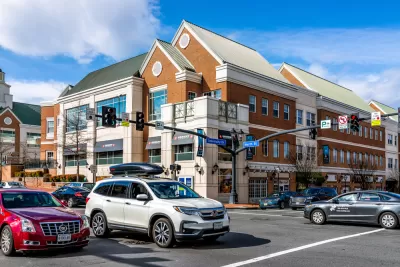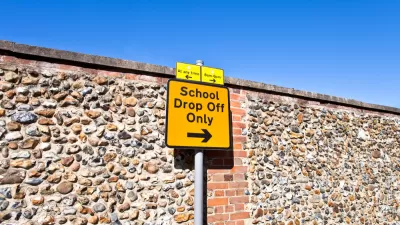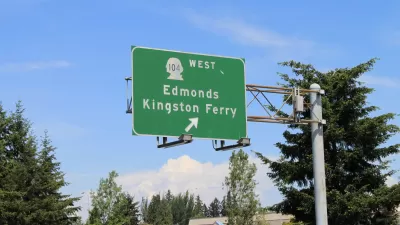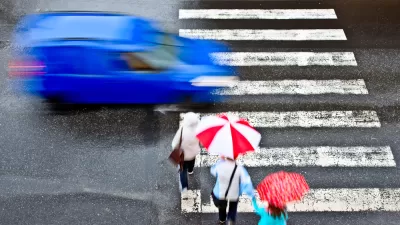Fairfax County wants to move away from a heavy reliance on level of service in favor of more pedestrian- and transit-oriented planning.

A proposal in Virginia’s Fairfax County could shift the focus of local transportation planning to pedestrian infrastructure and transit, moving away from the common level of service (LOS) model that prioritizes the fast movement of vehicular traffic. As Vernon Miles reports for FFX Now, the policy, called “Additional Measures of Effectiveness,” would require the Department of Transportation to evaluate the impact of transportation projects on pedestrian, bike, and transit infrastructure and safety.
According to Gregg Stevenson, deputy director of the Fairfax County Department of Transportation, “if the county wants to become more multimodal and make bus, bicycle, and pedestrian traffic as viable as cars, it needs to update its measures of effectiveness to match that.”
Miles notes that any new transportation analyses wouldn’t apply in the same way across the country. “The presentation noted that the county is broken up into ‘tiers’ of similar land uses, with different modes of transportation emphasized in different areas. For example, the type of bicycle and transit-focused development might be more heavily emphasized in Tysons’ urban environment, but not as much in low-density, residential neighborhoods.”
The agency plans to keep developing the policy throughout 2023.
FULL STORY: Fairfax County could put bicycles and transit on par with cars when gauging transportation needs

Study: Maui’s Plan to Convert Vacation Rentals to Long-Term Housing Could Cause Nearly $1 Billion Economic Loss
The plan would reduce visitor accommodation by 25,% resulting in 1,900 jobs lost.

North Texas Transit Leaders Tout Benefits of TOD for Growing Region
At a summit focused on transit-oriented development, policymakers discussed how North Texas’ expanded light rail system can serve as a tool for economic growth.

Using Old Oil and Gas Wells for Green Energy Storage
Penn State researchers have found that repurposing abandoned oil and gas wells for geothermal-assisted compressed-air energy storage can boost efficiency, reduce environmental risks, and support clean energy and job transitions.

From Blight to Benefit: Early Results From California’s Equitable Cleanup Program
The Equitable Community Revitalization Grant (ECRG) program is reshaping brownfield redevelopment by prioritizing projects in low-income and environmental justice communities, emphasizing equity, transparency, and community benefits.

Planting Relief: Tackling Las Vegas Heat One Tree at a Time
Nevada Plants, a Las Vegas-based nonprofit, is combating the city’s extreme urban heat by giving away trees to residents in underserved neighborhoods, promoting shade, sustainability, and community health.

How Madison’s Tree Planting Efforts Are Growing a Healthier Community
Madison’s annual tree planting initiative is enhancing environmental resilience, public health, and community livability by adding 1,400 carefully selected trees citywide, with strong community and institutional support for urban forestry.
Urban Design for Planners 1: Software Tools
This six-course series explores essential urban design concepts using open source software and equips planners with the tools they need to participate fully in the urban design process.
Planning for Universal Design
Learn the tools for implementing Universal Design in planning regulations.
Ascent Environmental
Borough of Carlisle
Institute for Housing and Urban Development Studies (IHS)
City of Grandview
Harvard GSD Executive Education
Toledo-Lucas County Plan Commissions
Salt Lake City
NYU Wagner Graduate School of Public Service





























